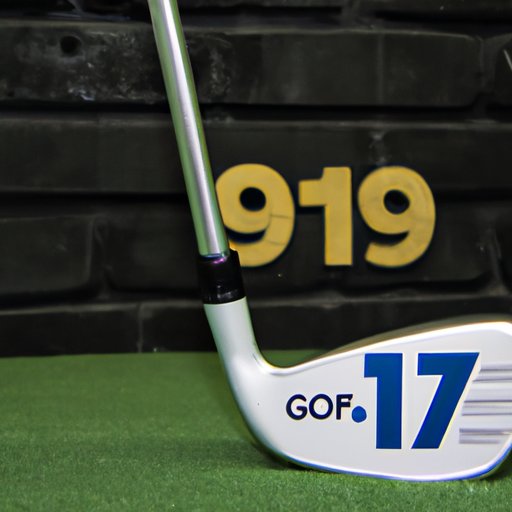Introduction
Loft is one of the most important characteristics of a golf club, but it is often overlooked by many players. Understanding what loft is and how it affects your game can help you improve your performance and make better decisions when selecting golf clubs. This article will explain what loft is, explain the different types of loft angles, and discuss the benefits of using different loft angles in golf.
Explaining Loft: An Overview of Golf Club Loft
Before discussing the benefits of using different loft angles in golf, it’s important to understand exactly what loft is and how it affects your shots. Loft is the angle between the clubface and the ground when the club is in its address position. It is measured in degrees, and is typically between 8 and 60 degrees.
Different types of golf clubs have different loft angles. Drivers and fairway woods typically have a lower loft angle, while irons and wedges have higher loft angles. The loft angle of a club affects the trajectory of the ball and the distance it travels. A lower loft angle produces a flatter trajectory with more roll, while a higher loft angle produces a higher trajectory with less roll.

The Benefits of Different Loft Angles in Golf Clubs
Now that we’ve established what loft is and the different types of loft angles, let’s look at how these different angles can benefit your game. Knowing how loft affects distance and accuracy in golf shots can help you make better decisions when selecting clubs for your bag.
The loft angle of a club affects the trajectory of your shot, which in turn affects the distance your ball travels. Generally speaking, a lower loft angle produces a flatter trajectory with more roll, which means more distance. A higher loft angle produces a higher trajectory with less roll, which means less distance. However, this isn’t always the case as other factors such as swing speed, lie angle, and swing path can also affect the distance of your shot.
In addition to affecting distance, loft also affects the accuracy of your shot. A lower loft angle produces a lower spin rate, which reduces sidespin and increases accuracy. A higher loft angle produces a higher spin rate, which increases sidespin and decreases accuracy.

Using Loft to Improve Your Short Game
Now that we know the basics of loft and how it affects distance and accuracy, let’s look at how you can use loft to improve your short game. Different loft angles offer different advantages and should be taken into consideration when selecting clubs for your bag.
Wedges are designed to provide maximum control and accuracy around the green. They typically have a higher loft angle than other clubs, which allows them to produce a higher trajectory with more spin. This makes them ideal for shots that require precision and accuracy, such as chips, pitches, and bunker shots.
For longer shots, drivers and fairway woods are designed to produce a lower trajectory with less spin. This makes them ideal for tee shots and long approach shots, as they will travel farther and with more accuracy. The key is to find a club that has the optimal loft angle for your swing.
Conclusion
Loft is an important factor in golf that is often overlooked by many players. Understanding what loft is and how it affects your game can help you make better decisions when selecting golf clubs. Different loft angles offer different advantages and should be taken into consideration when selecting clubs for your bag.
A lower loft angle produces a flatter trajectory with more roll, which means more distance. A higher loft angle produces a higher trajectory with less roll, which means less distance. In addition, loft also affects the accuracy of your shot, with a lower loft angle producing a lower spin rate and a higher loft angle producing a higher spin rate.
To get the most out of your golf game, it’s important to select the right loft angle for your clubs. Experiment with different loft angles and find the one that works best for your swing. With the right loft angle, you can maximize your distance and accuracy and improve your short game.


